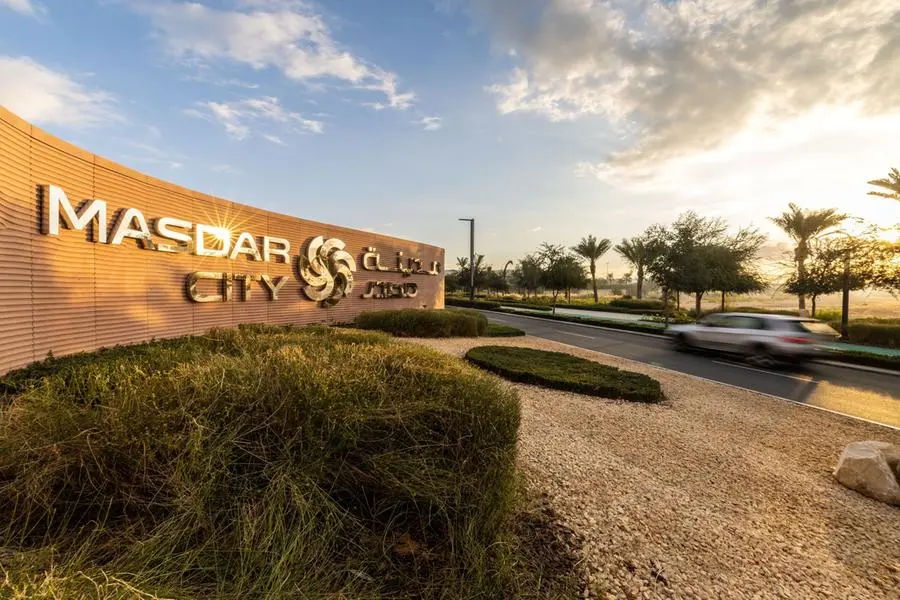Masdar, EWEC Break Ground on $6B Solar Storage Project to Deliver 1 GW of Continuous Clean Power

- The Masdar / Emirates Water and Electricity Company (EWEC) partnership will deliver 1 gigawatt of round-the-clock renewable baseload power via 5.2 GW PV plus 19 GWh of battery storage.
- The capital investment is more than AED 22 billion ( $6 Billion) and the project is expected to avoid approximately 5.7 million tonnes of CO₂ annually once operational in 2027
- Supplier contracts awarded to major global players (CATL for BESS, Jinko/JA Solar for PV modules, POWERCHINA & L&T for EPC) signal a shifting supply-chain dynamic in utility-scale renewable assets.
Project scope and milestone
In Abu Dhabi, the UAE’s government-backed clean energy champion Masdar and national utility EWEC formally broke ground on what they describe as the “world’s first gigascale round-the-clock renewable energy project”. The facility comprises a 5.2 GW solar photovoltaic plant paired with a 19 GWh battery energy storage system, engineered to supply 1 GW of continual power output in one of the largest renewables investments to date.
The project’s scale goes beyond conventional solar-plus-storage pairings, extending into baseload territory traditionally occupied by fossil or nuclear assets. It will deploy advanced grid-forming, black-start and virtual-power-plant technologies, suggesting a move from intermittent renewables toward dispatchable clean power.
Governance, finance and industrial policy
From a governance perspective, the project is clearly aligned with the UAE’s drive toward net-zero and industrial diversification. Masdar, which plays a pivotal role in the country’s clean-energy ambitions, is leveraging state backing and sovereign-led policy coherence to mobilise capital and international partners.
Financially, the AED 22 billion+ investment (approximately USD 6 billion) is likely to combine equity funding from Masdar/EWEC alongside project finance debt. While full details have not been publicly disclosed, the precedent for large utility-scale renewable assets suggests that non-recourse debt and long-term PPAs will form the backbone of the deal structure.
Industrial policy implications are notable. The selection of CATL for the BESS supply and Jinko/JA Solar for PV modules (with top-con technology) demonstrate a global supply chain aimed at yielding durability and scale. Masdar describes the project as its “largest and most ambitious” to date.
Climate and ESG implications
From an ESG lens, the project addresses one of the core constraints on renewables: intermittency. By coupling a high-capacity PV array with the world’s largest BESS (to date), the facility is designed to deliver continuous output—thus allowing renewable energy to play the role of baseload power rather than just supplementary. That matters for investors and grid operators alike when assessing the transition risk of legacy thermal assets.
On climate metrics, the target annual CO₂ avoidance is about 5.7 million tCO₂. While that figure is meaningful, C-suite stakeholders will want to benchmark the levelised cost of energy (LCOE), capacity factors, and battery degradation assumptions, all of which remain under public wraps.
In governance terms, the project reflects emerging frontiers in green power contracting: large-scale baseload renewables, industrial-grade storage deployment, and virtual-power-plant coordination. These components will be relevant for commodity-price, regulatory and investment risk assessments for other markets eyeing 24/7 clean supply.
RELATED ARTICLE: Masdar Expands Iberian Renewable Footprint With $392M Spanish Solar Deal
What executives and investors should watch
For global investors, this project signals that dispatchable renewables are moving into the same risk/return zone previously reserved for fossil baseload assets. The ability to bid into PPAs as a 1 GW continuous power provider—rather than a solar farm limited to daylight hours—changes the investment calculus.
Operators should note the technology stack: grid-forming inverters, black-start capability and AI-enhanced forecasting that can anchor power system resilience and improve offtake certainty. These features become critical for offtakers and utilities seeking to integrate large volumes of renewables without reliability compromise.
Policy-makers should parse the UAE model. A strong state-led backing, bundled industrial strategy (module and battery manufacturing), and large-scale project delivery create a replicable template. Yet the key will be how tariff negotiation unfolds, how cost competitiveness fares globally, and whether regulatory frameworks adapt to enable similar baseload renewable bids.
Global significance and next steps
The project becomes a reference point in the global energy transition: it challenges the “intermittency” narrative, scales battery storage to gigawatt-hour levels, and brings solar into the baseload category. For markets in Asia, Africa, Latin America where energy demand is rising fast, and where policy frameworks are evolving, the implications are tangible.
As the facility heads toward its 2027 target, tracked metrics such as first-mover tariff levels, battery lifetime and performance, supply-chain localisation outcomes, and job-creation impact (10,000+ jobs according to Masdar) will offer data points for investors and policy advisers.
In short, the UAE’s gigascale solar-and-storage initiative offers a blueprint for deploying large-scale clean energy with baseload reliability—and underscores that the next phase of the transition is not simply “more solar” but “solar that acts like coal”.
Follow ESG News on LinkedIn












